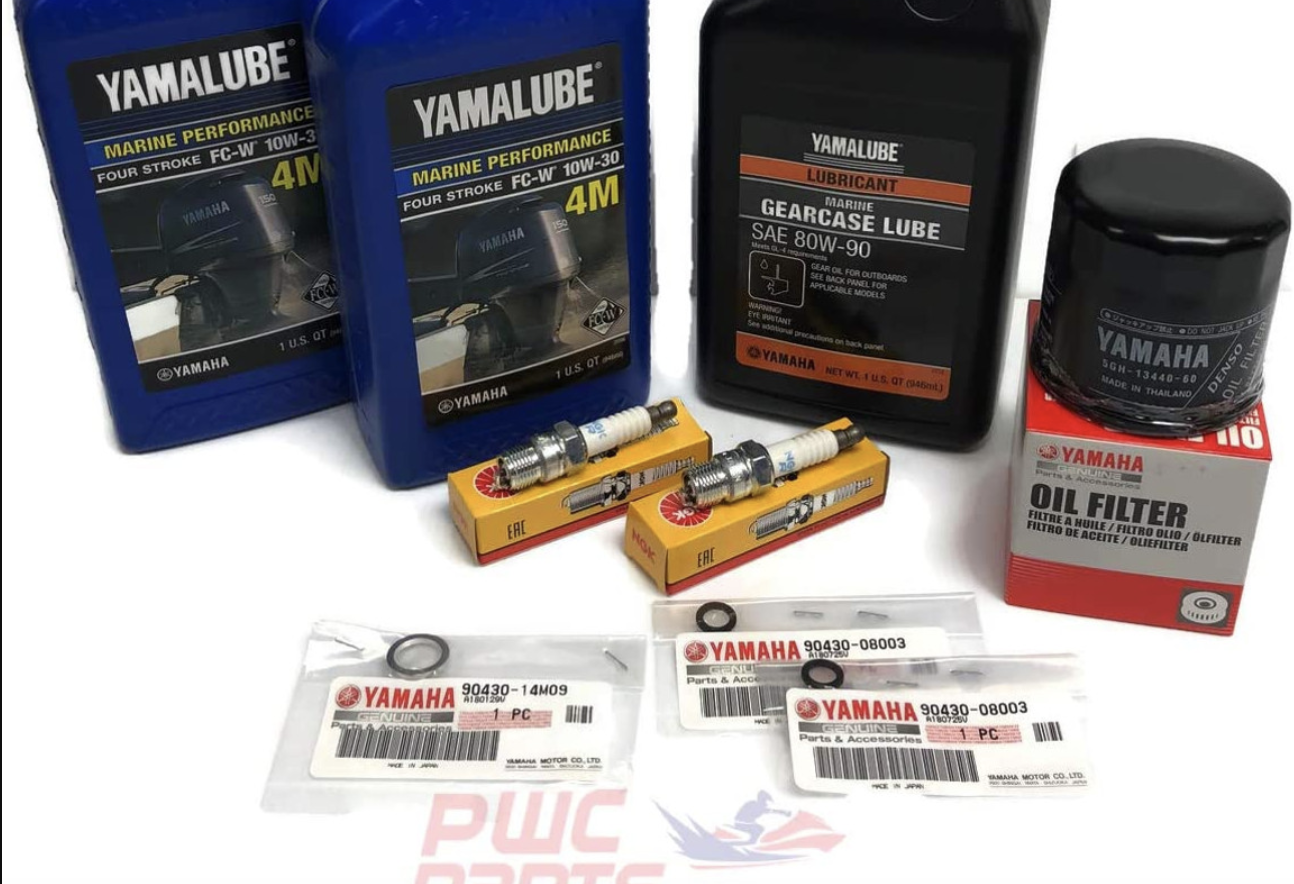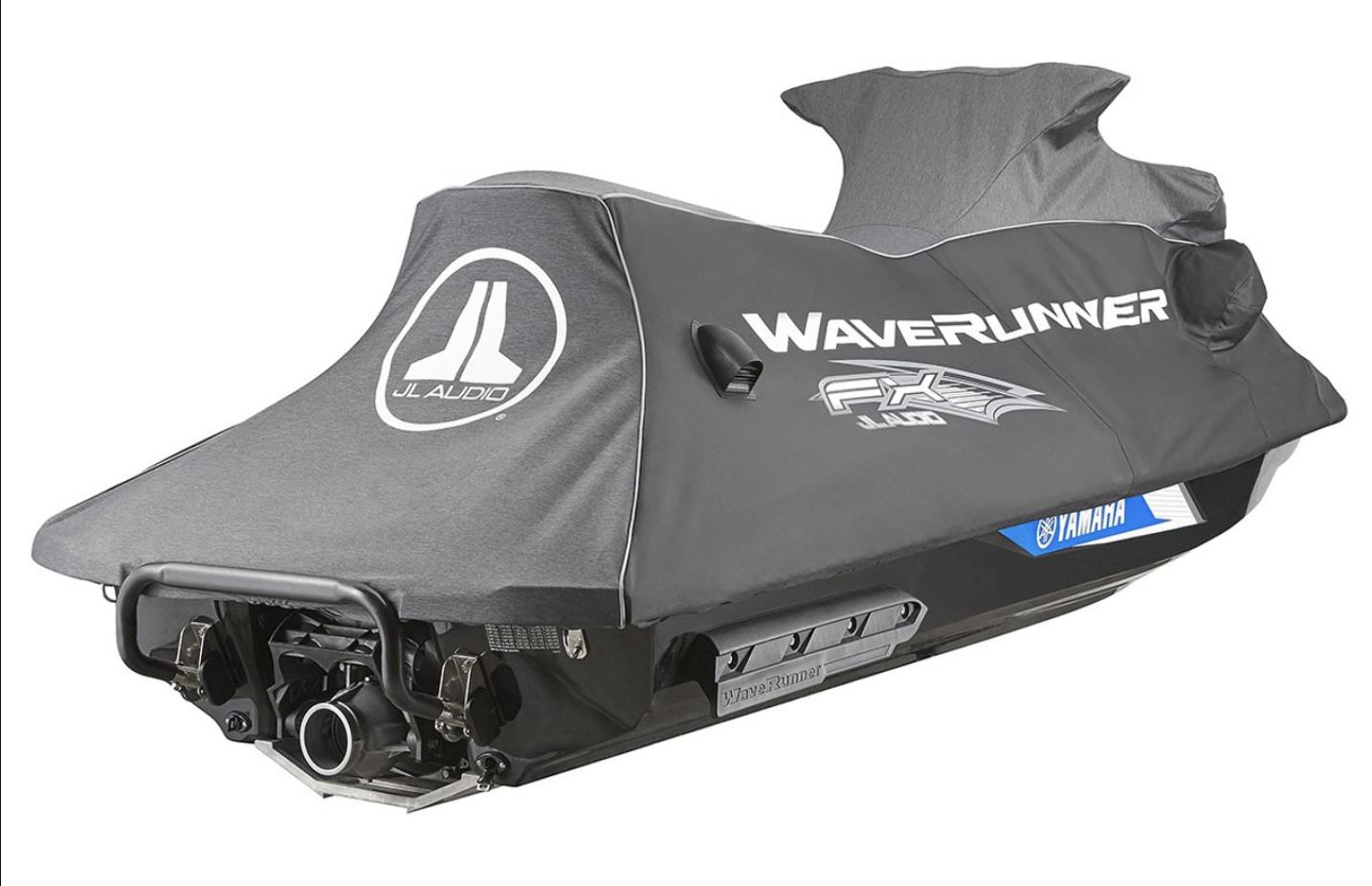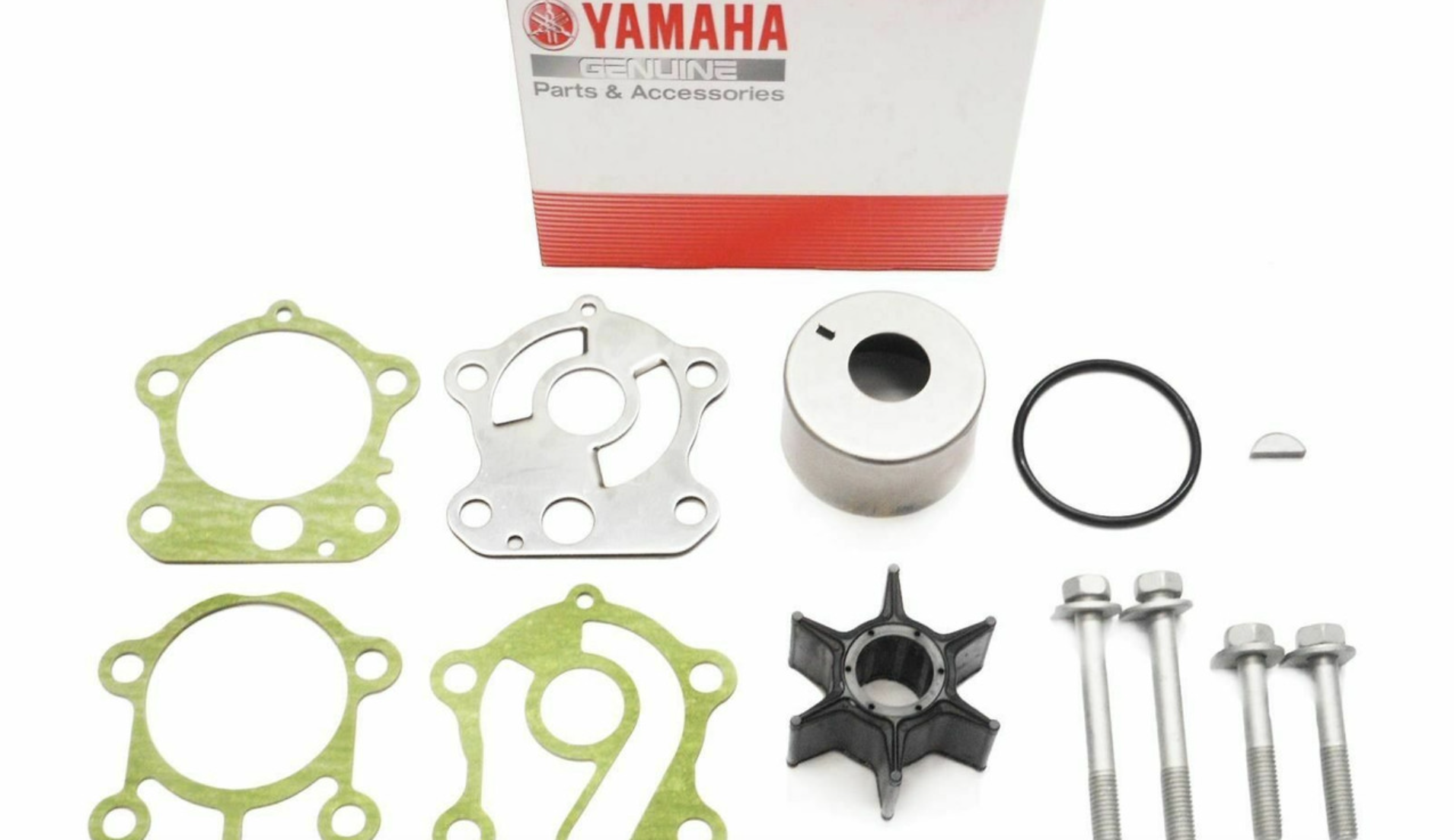The Ultimate Guide to 2-Stroke Outboard Maintenance
May 16th 2024
Navigating the waters with a 2 stroke outboard engine propelling your boat offers an exhilarating experience unmatched in recreational and professional boating. Yet, this thrilling adventure demands a commitment to regular maintenance, a cornerstone for safeguarding the engine's performance and longevity.
The essence of 2-stroke outboard maintenance transcends routine checks; it embodies a proactive approach to preserving the heart of your marine vessel. This guide is crafted to illuminate the path of maintenance for boat owners, emphasizing the 'how' and the 'why' behind each maintenance task.
Let's embark on this journey of maintenance enlightenment together, ensuring your time on the water is enjoyable and worry-free.

Understanding 2-Stroke Outboard Engines
The Basics of Operation
At the heart of every 2-stroke outboard engine is a simple yet powerful mechanism that sets it apart from its 4-stroke counterparts. Unlike 4-stroke engines, which complete a power cycle in four piston movements, a 2-stroke engine does so in just two.
This efficiency in movement allows for a power stroke on every crankshaft revolution, translating to a high power-to-weight ratio that is especially beneficial for marine applications.
The fundamental operation involves the intake of air and fuel into the combustion chamber, compression of this mixture, combustion that drives the piston down, and exhaust of the burnt gases—all happening in two strokes of the piston.
Oil and Fuel Mixture
One distinctive feature of 2 stroke engines is the requirement for oil to be mixed with the fuel. This mixture is essential for lubricating the engine's moving parts, as 2-stroke engines do not have an oil sump for internal lubrication. The correct ratio of oil to fuel is crucial; too little oil can lead to insufficient lubrication and engine damage, while too much oil can cause excessive smoke and deposit buildup.
Importance of Regular Maintenance
While advantageous for power and weight, the design of 2 stroke outboard engines also necessitates diligent maintenance. The oil-fuel mixture can accumulate deposits within the engine and exhaust system, potentially reducing efficiency and performance over time.
Regular maintenance tasks such as cleaning the spark plugs, changing the gearbox oil, and ensuring the fuel system is clean are not merely routine; they are preventative measures that keep your engine running smoothly and reliably.
Key Differences from 4 Stroke Engines
Understanding the differences between 2-stroke and 4-stroke engines is key to effective maintenance. As mentioned, the primary difference lies in the engine's operation cycle and lubrication method.
However, these differences extend into maintenance practices as well. 2 stroke engines, for example, generally require more frequent attention to the spark plugs and air filters due to the nature of their oil-fuel mixture and combustion process. Conversely, 4-stroke engines, with their separate oil lubrication system, necessitate regular oil changes and valve adjustments.
The essence of 2-stroke outboard maintenance is not just about following a set of tasks; it's about understanding your engine's unique needs and responding to them. By grasping how your engine operates and the critical role maintenance plays in its performance and longevity, you're equipped to ensure a reliable, efficient engine powers your marine adventures.
Understanding 2-Stroke Outboard Engines
2 stroke outboard engines stand out in the marine world for their efficiency and the unique power they bring to boating experiences. These engines operate on a two-stroke cycle that includes compression and combustion strokes, making them capable of completing a power cycle with every crankshaft revolution.
This characteristic provides a notable power-to-weight ratio, offering boaters a responsive and powerful performance in a variety of marine environments.
One of the main differences between 2-stroke and 4-stroke engines lies in their operational mechanics. While 4-stroke engines have separate compartments for oil and fuel, 2-stroke engines typically mix oil with fuel to ensure proper lubrication throughout the engine.
This mixture reduces friction and prevents the engine's components from wearing down prematurely. However, it also means that 2-stroke engines require more meticulous maintenance to manage residue and buildup from this oil-fuel mixture.
The simplicity of 2 stroke engines often translates to a lighter and more compact design than their 4-stroke counterparts. This advantage makes them ideal for smaller boats and watercraft where weight and space are considerations.
Nevertheless, the very feature that makes 2-stroke engines appealing— their efficient power cycle—also puts them at a higher risk of wear and tear if not properly maintained. Regular maintenance is key to ensuring these engines operate smoothly, maintain fuel efficiency, and extend their operational lifespan.

Routine Maintenance Tasks
Maintaining a 2 stroke outboard engine is more manageable than it might seem, especially when you break down the tasks into daily, regular, and seasonal activities. This structured approach ensures your engine receives comprehensive care throughout its life.
Daily Checks: Before every use, perform quick inspections to safeguard against common issues. Check the fuel and oil levels to ensure enough mix for your trip. Inspect the engine and lower unit for any signs of leaks, which could indicate problems with seals or gaskets. These daily checks help identify potential issues before they escalate into major problems.
Regular Maintenance:
Cleaning and Replacing Spark Plugs: Spark plugs are vital for engine ignition, and keeping them clean ensures your engine starts smoothly. Check your spark plugs regularly for signs of wear or buildup, and clean them with a wire brush. Replacing them is a simple and cost-effective way to maintain engine efficiency if they're beyond cleaning.
Changing the Gearbox Oil: The gearbox oil lubricates the moving parts within your outboard's lower unit. Over time, this oil can degrade or become contaminated, leading to increased friction and wear. Drain and replace the gearbox oil at least once a season or according to your manufacturer's recommendations.
Inspecting and Cleaning the Fuel System: The fuel system is crucial for delivering the mix of fuel and oil to your engine. Regularly check the fuel lines for cracks or leaks and replace them if necessary. Cleaning the carburetor and fuel injectors helps prevent blockages that can impair engine performance.
Checking and Replacing the Air Filter: While 2-stroke engines don't always have traditional air filters, those require clean filters to ensure proper airflow. Check your engine's air intake system and clean or replace filters to maintain optimal air-fuel mixtures.
Seasonal Maintenance:
Winterizing Your Engine: If you're in a region where boating is seasonal, preparing your engine for winter storage is crucial. Adding a fuel stabilizer, draining the fuel system, and fogging the engine internals with oil can prevent corrosion and ensure a smooth start in the spring.
Checking the Propeller and Lower Unit for Damage: The propeller and lower unit are susceptible to damage from debris and wear. At the end of the season, inspect these areas for any signs of damage, such as dents or bent blades, which can affect performance and fuel efficiency.
By adhering to these routine maintenance tasks, you can significantly enhance the performance and longevity of your 2-stroke outboard engine. Regular care prevents common issues and ensures your engine is ready for your next aquatic adventure.
Troubleshooting Common Issues
Difficulty in Starting
One of the most common frustrations for 2-stroke outboard engine owners is difficulty starting the engine. This problem often stems from old or contaminated fuel, clogged fuel lines, or spark plug problems.
Regular maintenance, such as changing your fuel regularly and cleaning or replacing your spark plugs, can help prevent these starting issues. Additionally, checking the fuel lines for blockages or leaks and ensuring they are properly connected can make a significant difference in starting your engine smoothly.
Loss of Power or Poor Performance
A loss of power or poor performance can signal several potential issues, ranging from clogged carburetors to improper fuel-to-oil ratios. Regularly cleaning the carburetor and ensuring the correct fuel-to-oil mix will help maintain engine power and performance.
Another factor to consider is the air filter; a dirty air filter can restrict airflow, diminishing engine efficiency. Checking and cleaning or replacing the air filter as part of your maintenance routine can thus greatly impact performance.
Overheating Engine
Overheating can be a serious issue for any outboard engine, often attributed to a cooling system failure. For 2-stroke engines, ensuring the water pump is functioning correctly and the thermostat is not stuck closed is crucial.
Regular inspection and maintenance of these components can prevent overheating. Additionally, keeping the engine clean of marine growth, which can block the water intake, is vital for proper cooling.
Excessive Smoke or Unusual Noises
Excessive smoke often indicates an issue with the oil, such as using the wrong type or mixing it in incorrect proportions with fuel. Ensuring you're using the right oil for your engine and adhering to the manufacturer's recommended mix ratio can help reduce smoke.
On the other hand, unusual noises may indicate mechanical issues, such as problems with the bearings or gears. Regular lubrication and checking for wear and tear can help catch these issues before they lead to significant damage.
Professional vs. DIY Maintenance
Deciding between handling maintenance tasks yourself or seeking professional help is crucial for the health and longevity of your 2-stroke outboard engine. While many maintenance tasks can be performed at home by the engine owner, understanding the limits of your knowledge and skills is key to preventing unintentional damage to your engine.
DIY Maintenance
DIY maintenance can be both rewarding and cost-effective. Tasks such as changing spark plugs, cleaning the fuel system, and replacing the air filter are well within the reach of most owners. These tasks require minimal tools and can be learned through manuals, online tutorials, and some practice.
However, the success of DIY maintenance heavily relies on using quality parts and fluids specifically designed for your engine. This ensures the longevity of your repairs and your engine's overall health.
Seeking Professional Help
For more complex issues or tasks that require specialized tools and knowledge, such as overhauling the carburetor, it's advisable to seek professional help. Professionals bring years of experience and expertise, ensuring the job is done correctly and safely.
Additionally, they can diagnose and troubleshoot problems that might be obscure to the average owner. When selecting a professional service, look for certified technicians with experience in your specific engine type to ensure the best care for your outboard.
Importance of Quality Parts and Fluids
Whether you maintain your engine or hire a professional, the importance of using quality parts and fluids cannot be overstated. High-quality maintenance products are designed to meet or exceed the specifications required by your engine, providing the best protection and performance. Avoiding generic or low-quality alternatives is essential to prevent damage and ensure your engine runs smoothly for years to come.

Choosing the Right Maintenance Products
When it comes to maintaining your 2-stroke outboard engine, the adage "you get what you pay for" couldn't be truer. Opting for high-quality maintenance products is not just a choice—it's a commitment to ensuring your marine engine's longevity and optimal performance.
Importance of High-Quality Maintenance Products
The market is flooded with countless maintenance products, each claiming superiority. However, the truth lies in the formulation and compatibility with 2 stroke engines. High-quality oils, for instance, are designed to provide the necessary lubrication without leaving harmful residues that can clog the engine's internal systems.
Similarly, top-notch spark plugs ensure efficient combustion, while superior-quality filters trap impurities effectively, preventing them from entering the engine's core.
Oils: The Lifeblood of Your Engine
For 2-stroke outboards, choosing the right oil is crucial. It lubricates moving parts and plays a key role in cooling engine components. At PWC Parts, we offer a selection of oils formulated specifically for 2-stroke engines, ensuring your outboard runs smoothly and efficiently. These oils are designed to minimize smoke, reduce engine deposits, and provide protection against wear, rust, and corrosion.
Spark Plugs: Igniting Performance
Spark plugs are small but mighty components of your engine. They ignite the fuel-air mixture, powering your outboard. Regular replacement with high-quality spark plugs can improve performance, fuel efficiency, and reduced emissions. Our catalog includes spark plugs from leading manufacturers engineered for reliability and longevity.
Filters: Your Engine’s First Line of Defense
Whether it's the fuel or air filter, these components are essential for keeping contaminants out of your engine. High-quality filters ensure that only clean fuel and air enter your combustion chamber, protecting your engine from the damage caused by dirt, debris, and other particulates. Our range includes air filters that offer superior filtration efficiency, ensuring your outboard engine operates at its best.
Gearbox Oil: Protecting the Heart of Your Outboard
Gearbox oil is essential for smoothly operating and protecting your outboard's gearbox. Quality gearbox oils provide excellent lubrication, protect against wear and tear, and ensure smooth gear shifting. Our selection at PWC Parts is designed to meet the specific needs of 2 stroke outboard engines, offering enhanced protection and performance.
Maintaining your 2-stroke outboard engine with high-quality products is an investment in its longevity and your overall boating experience. Choosing the right oils, spark plugs, filters, and other maintenance products ensures your engine remains a reliable companion on all your marine adventures.
At PWC Parts, we understand the critical role that maintenance plays in the life of your outboard engine. That's why we've curated a selection of the finest maintenance products specifically designed for 2-stroke engines. From oils to filters and spark plugs to gearbox oils, we have everything you need to keep your engine running smoothly and efficiently.
We invite you to explore our range of outboard maintenance products and discover the difference that quality can make in your maintenance routine. With PWC Parts, you can trust that you're getting the best products on the market, backed by expert advice and support.

